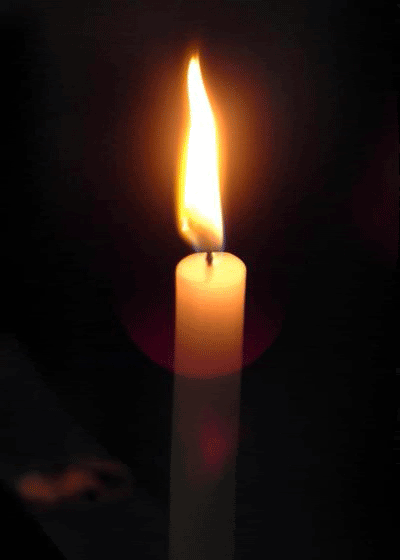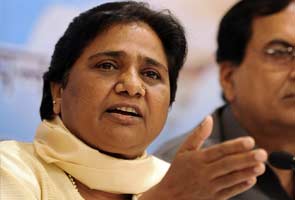933 LESSON 28-05-2013 TUESDAY-FREE ONLINE eNālāndā Research and Practice UNIVERSITY
தமிழில் திரிபிடக மூன்று தொகுப்புகள்
மற்றும்
பன்னிரண்டாகவுள்ள மண்டலங்கள்
சுருக்கமான வரலாற்று முன் வரலாறு
ஸுத்தபிடக
வினயபிடகே
அபிதம்மபிடக
புத்தசமய நெறி முறைகளின் பன்னிரண்டாகவுள்ள மண்டலங்கள்
புத்தசமய நெறி முறைகளின் ஒன்பது மண்டலங்கள்
TIPITAKA-ஸுத்தபிடக-Section-A
TIPITAKA
TIPITAKA AND TWELVE DIVISIONS
Brief historical background
Sutta Pitaka
Vinaya Pitaka
Abhidhamma Pitaka
Twelve Divisions of Buddhist Canons
Nine Divisions of Buddhist Canons ![]() through http://sarvajan.ambedkar.org
through http://sarvajan.ambedkar.org![]()


TO





திரிபிடக மற்றும் பன்னிரண்டாகவுள்ள மண்டலங்கள் புத்தரின் 45 ஆண்டுகளுக்கும் மேலாக போதிக்கப்பட்ட கோட்பாடு தொகுப்பு. அது ஸுத்த (மரபொழுங்கு சார்ந்த போதனை),வினய (ஒழுங்கு சார்ந்த விதித் தொகுப்பு) மற்றும் அபிதம்ம (விளக்கவுரைகளின்) உள்ளடக்கு. திரிபிடக
இப்பொழுதுள்ள படிவத்தில் தொகுத்து மற்றும் ஒழுங்கு படுத்தியது,
சாக்கியமுனி புத்தருடன் நேரடியான தொடர்பிருந்த சீடர்களால். புத்தர் இறந்து
போனார், ஆனால் அவர், மட்டுமழுப்பின்றி மரபுரிமையாக மனித இனத்திற்கு அளித்த உன்னத
தம்மம் (தருமம்) இன்னும் அதனுடைய பண்டைய தூய்மையுடன் இருக்கிறது. புத்தர்
எழுத்து மூலமாய்த் தெரிவிக்கப்பட்டுள்ள பதிவுகள் யாவும் விட்டுச்
செல்லாபோதிலும், அவருடைய மேன்மைதங்கிய கெளரவம் நிறைந்த சீடர்கள் அவற்றை
ஞாபக சக்தியால் ஒப்புவித்து, பேணிக்காத்து மற்றும் அவற்றை வாய்மொழியாக
தலைமுறை தலைமுறையாககைமாற்றிக் கொண்டுள்ளனர்.
TIPITAKA AND TWELVE DIVISIONS is the collection of the teachings
of the Buddha over 45 years. It consists of Sutta (the conventional
teaching), Vinaya (Disciplinary code) and Abhidhamma (commentaries).
The Tipitaka was compiled and arranged in its present form by the
disciples who had immediate contact with Shakyamuni Buddha.
The Buddha
had passed away, but the sublime Dhamma which he unreservedly bequeathed
to humanity still exists in its pristine purity.
Although the Buddha
had left no written records of his teachings, his distinguished
disciples preserved them by committing to memory and transmitting them
orally from generation to generation.
சுருக்கமான வரலாற்று முன் வரலாறு
புத்தரின் இறுதி
சடங்கிற்கப்புறம் உடனே, 500 மேன்மைதங்கிய கெளரவம் நிறைந்த அறஹதர்கள்
(அருகதையுள்ளவர்கள்) முதலாவது பெளத்த சமயத்தினர் அவை என்றழைக்கப்பட்ட
புத்தர் போதித்த போதனைகளை மறுபடிமுற்றிலும் சொல் அவை கூட்டினர்.
புத்தருடன் திடப்பற்றுடன் உடனிருந்த மற்றும் புத்தரின் முழுமை போதனையுரைகளையும் கேட்டுணரும் வாய்ப்புப் பெற்ற பிரத்தியேகமான சிறப்புரிமை வாய்ந்த பூஜிக்கத்தக்க ஆனந்தா, ஸுத்த (மரபொழுங்கு சார்ந்த போதனை) நெட்டுருப்பண்ணி ஒப்புவிவித்தார், அதே சமயம் பூஜிக்கத்தக்க உபாலி, வினய (ஒழுங்கு
சார்ந்த விதித் தொகுப்பு) ஸங்கத்திற்கான நடத்தை விதிகளை நெட்டுருப்பண்ணி
ஒப்புவிவித்தார்.முதலாவது பெளத்த சமயத்தினர் அவையின் ஒரு நூற்றாண்டுக்குப்
பின், சில சீடர்கள் ஒரு சில சிறுபகுதி விதிகளின் மாற்றம் தேவை என
உணர்ந்தனர். பழமையிலிருந்து நழுவாத பிக்குக்கள் மாற்றங்கள் எதுவும்
தேவையில்லை எனக் கூறினர் அதே சமயம் மற்றவர்கள் சில ஒழுங்கு சார்ந்த விதிகளை
(வினய) (ஒழுங்கு
சார்ந்த விதித் தொகுப்பு)) சிறிது மாற்றியமைக்க வலியுருத்தினர்.முடிவில்
அவருடைய அவைக்குப் பிறகு வேறான தனி வேறான புத்தமத ஞானக்கூடங்கள்
உருவாக்குதல் வளரத் தொடங்கியது. மற்றும் இரண்டாவது அவையில் (வினய) (ஒழுங்கு
சார்ந்த விதித் தொகுப்பு)) உரியதாயிருந்த விசயம் மட்டும் தான் விவாதம்
செய்ப்பட்டது மற்றும் தம்மா பற்றிய கருத்து மாறுபாடு அறிவிக்கப் படவில்லை.
மூன்றாம் நூற்றாண்டு அசோக சக்கரவர்த்தி காலத்தில் மூன்றாவது அவையில் ஸங்க சமூகத்தின் வேறான தனி வேறான நடத்தை விதிகளின் அபிப்பிராயங்கள் விவாதம் செய்ப்பட்டது. இந்த அவையில் வேறான தனி வேறான(வினய) (ஒழுங்கு சார்ந்த விதித் தொகுப்பு)) உரியதாயிருந்த விசயம் மட்டும் வரையறுக்கப்பபடவில்லை ஆனால் மேலும் தம்மா தொடர்பானதாகவும் இருந்தது. அபிதம்மபிடக இந்த அவையில் விவாதம் செய்ப்பட்டது மற்றும் சேர்த்துக்
கொள்ளப்பட்டது. ஸ்ரீலங்கா (இலங்கையில்) 80ம் நூற்றாண்டு கூடிய, நான்காம்
அவை என அழைக்கப்படும் இந்த அவை சமயப்பணியார்வமுடைய வேந்தர் வட்டகாமினி
அபைய கீழுள்ள ஆதரவுடன் கூடியது. அது இந்த காலத்தில் தான் திரிபிடக ஸ்ரீலங்காவில் முதன்முறையாக எழுத்து வடிவில் புத்தசமயத்தவரது புணித பாளி மொழியில் ஈடுபடுதலானது.
Brief historical background
Immediately after the final passing away of the Buddha, 500
distinguished Arahats held a convention known as the First Buddhist
Council to rehearse the Doctrine taught by the Buddha. Venerable Ananda,
who was a faithful attendant of the Buddha and had the special
privilege of hearing all the discourses the Buddha ever uttered, recited
the Sutta, whilst the Venerable Upali recited the Vinaya, the rules of
conduct for the Sangha.
One hundred years after the First Buddhist
Council, some disciples saw the need to change certain minor rules. The
orthodox Bhikkus said that nothing should be changed while the others
insisted on modifying some disciplinary rules (Vinaya). Finally, the
formation of different schools of Buddhism germinated after his council.
And in the Second Council, only matters pertaining to the Vinaya were
discussed and no controversy about the Dhamma was reported.
In the 3rd
Century B.C. during the time of Emperor Asoka, the Third Council was
held to discuss the differences of opinion held by the Sangha community.
At this Council the differences were not confined to the Vinaya but
were also connected with the Dhamma. The Abhidhamma Pitaka was discussed
and included at this Council. The Council which was held in Sri Lanka
in 80 B.C. is known as the 4th Council under the patronage of the pious
King Vattagamini Abbaya. It was at this time in Sri Lanka that the
Tipitaka was first committed to writing in Pali language.
This outline displays the publication of books in the Vipassana Research Iinstitute’s Devan±gari-script edition of the Chaμμha Saªg±yana (Sixth Council) Tipiμaka. The names of the volumes are displayed in italics with the suffix “-p±¼i” indicating the volume is part of the root Tipiμaka, rather than commentarial literature. This outline lists the root volumes only.
http://www.metta.lk/fonts/index.html
Sinhala and Roman
fonts
If you use a PC then you should download the files:
Sinhala and Roman fonts
This archive contails several True type fonts in Sinhala and
Roman
If you use a MAC then send us an email and we shall help you
soon.
Download font from This Server As .exe
Download font from This Server as .zip
Installing your new fonts
The font that you have down loaded should be installed in
Windows. Double click on the font to extract the self
extracting archive Sinhala.com For Win 3.1 use Settings
Control Panel Fonts Install New fonts select the directory
that contain the uncompressed (Extracted) true type font file.
Select Tipitaka_Sinhala1.ttf . and it will be installed
to your system. If you want to un-install them use the
similar operation. For Win 95 +, just drag the font to the
Font folder and restart Windows
If you see Your Sinhala script below then your fonts have been
installed correctly.
| Y1s ,xld |
Tipitaka_Sinhala1
is a public domain font made by DMS, Sri Lanka.
for the Sri Lanka Tipitaka Project.
Se the enclosed key-board layout,
and
Enjoy some Sinhala letters to your friends!
The Sinhalese Alphabet
| w | wd | we | wE | b | B | W | W# | t | ta | T | Tz |
T# | iD | iDD |
| a | à | i | ã | u | å | e - | o - | au | iru | irå |
| l | L | . | X | ZZ Z. |
| ka | kha | ga | gha | nga |
p P c CO [ Zc {
ca cha ja jha ¤ ¤ja gna
g G v V K ZV
ña ñha óa óha õ nñha
| ; : o O k ZO Zo ta tha da dha na ddha nda m M n N u U pa pha ba bha ma mba h r , j i I Y y < x % ya ra la va sa ùa ÷a ha ëa ü þ la l ld le lE ls lS l2 l@ |
k ka kà k? k? ki kã kå ku
fl fla fld flda
ffl fl#
ke k? ko k? kai kau
l1 ;! rA re rE / ?
| \
kra rta r ??ru ???rè ???rŠ
???r? ??fa ??fa
kq kQ ZM f#
nu ?nå Âu gau
È É Ê Ë Ì Í
C F J H
du då dra nda ndu ndå k t n ya
I do not know the Roman representation of all of them
Technical support & comments please
email us
Please note: These books are in P±li only, in Devan±gari script, and are not for sale from Pariyatti or from VRI.
No set of English translations is available. For further information please see: www.tipitaka.org
Vinaya Piμaka Sutta Piμaka Abhidhamma Piμaka
Tipiμaka (three “baskets”)
(Three divisions, printed in 5 books)
1. Sutta Vibhaªga [two books containing rules for the bhikkhus and
bhikkhunis, outlining eight classes of offences]
(1) P±r±jika-p±¼i Bhikku Bhikkhuni
p±r±jik± (expulsion) 4 8
saªghadises± (meetings of the Sangha) 13 17
aniyat± (indeterminate) 2 0
nissagiy± p±cittiy± (expiation with forfeiture) 30 30
(2) P±cittiya-p±¼i
suddha p±cittiy± (ordinary expiation) 92 166
p±tidesaniy± (confession re: alms food) 4 8
sekhiya (concerning etiquette & decorum) 75 75
adhikaraºasamath± (legal process) 7 7
(concludes with bhikkuni vinaya rules) ______ ______
227 311
2. Khandaka [two books of rules and procedures]
(3) Mah±vagga-p±¼i (10 sections [khandhakas]; begins with historical accounts of the
Buddha’s enlightenment, the first discourses and the early growth of the Sangha;
outlines the following rules governing the actions of the Sangha:
1. rules for admission to the order (upasampad±)
2. the uposatha meeting and recital of the p±timokkha
3. residence during the rainy season (vassa)
4. ceremony concluding the vassa, called pav±raº±
5. rules for articles of dress and furniture
6. medicine and food
7. annual distribution of robes (kaμhina)
8. rules for sick bhikkhus, sleeping and robe material
9. mode of executing proceedings of the Sangha
10. proceedings in cases of schism
(4) C³¼avagga-p±¼i (or Cullavagga) (12 khandakas dealing with further rules and procedures
for institutional acts or functions, known as saªghakamma:
1. rules for dealing with offences that come before the Sangha
(saªgh±disesa)
2. procedures for putting a bhikkhu on probation
3. procedures for dealing with accumulation of offences by a bhikkhu
4. rules for settling legal procedures in the Sangha
5. misc. rules for bathing, dress, etc.
6. dwellings, furniture, lodging, etc.
7. schisms
8. classes of bhikkhus and duties of teachers & novices
9. exclusion from the p±timokkha
10. the ordination and instruction of bhikkhunis
11. account of the 1st council at R±jagaha
12. account of the 2nd council at Ves±li
3. Pariv±ra-p±¼i [a summary of the vinaya, arranged as a
catechism for instruction and examination]
(5) Pariv±ra-p±¼i The fifth book of vinaya serves as a kind of manual enabling the reader
to make an analytical survey of the whole of Vinaya Piμaka.
[Seven sections of systematic, abstract exposition of all dhammas; printed in
12 books]
1. Dhammasaªgaº²
(enumeration of the dhammas)
(1) Dhammasaªgaº²-p±¼i
2. Vibhaªga-p±¼²
(distinction or analysis of dhammas)
(2) Vibhaªga-p±¼²
3. Dh±tukath±
(discussion of elements; these 1st three sections form a trilogy that
must be digested as a basis for understanding Abhidhamma)
4. Puggalapaññatti
(designation of individuals; ten chapters: the 1st dealing with single
individuals, the 2nd with pairs, the 3rd with groups of three, etc.
(3) Dh±tukath±-Puggalapaññatti-p±¼²
5. Kath±vatthu-p±¼²
(points of controversy or wrong view; discusses the points raised and
settled at the 3rd council, held at the time of Aoeoka’s reign, at Patna)
(4) Kath±vatthu-p±¼²
6. Yamaka-p±¼²
(book of pairs; a use of paired, opposing questions to resolve ambiguities
and define precise usage of technical terms)
(5) Yamaka-p±¼², Vol I
(6) Yamaka-p±¼², Vol II
(7) Yamaka-p±¼², Vol III
7. Paμμh±na
(book of relations; the elaboration of a scheme of 24 conditional
relations [paccaya] that forms a complete system for understanding
the mechanics of the entire universe of Dhamma)
(8) Paμμh±na-p±¼i, Vol I
(9) Paμμh±na-p±¼i, Vol II
(10) Paμμh±na-p±¼i, Vol III
(11) Paμμh±na-p±¼i, Vol IV
(12) Paμμh±na-p±¼i, Vol V
(Five nik±yas, or collections)
1. D²gha-nik±ya [34 suttas; 3 vaggas, or chapters (each a book)]
(1) S²lakkhandavagga-p±¼i (13 suttas)
(2) Mah±vagga-p±¼i (10 suttas)
(3) P±μikavagga-p±¼i (11 suttas)
2. Majjhima-nik±ya [152 suttas;15 vaggas; divided in 3 books,
5 vaggas each, known as paºº±sa (‘fifty’)]
(1) M³lapaºº±ssa-p±¼i (the ‘root’ fifty)
1. M³lapariy±yavagga (10 suttas)
2. S²han±davagga (10 suttas)
3. Tatiyavagga (10 suttas)
4. Mah±yamakavagga (10 suttas)
5. C³¼ayamakavagga (10 suttas)
(2) Majjhimapaºº±sa-p±¼i (the ‘middle’ fifty)
6. Gahapati-vagga (10 suttas)
7. Bhikkhu-vagga (10 suttas)
8. Paribb±jaka-vagga (10 suttas)
9. R±ja-vagga (10 suttas)
10. Br±hmana-vagga (10 suttas)
(3) Uparipaºº±sa-p±¼i (means ‘more than fifty’)
11. Devadaha-vagga (10 suttas)
12. Anupada-vagga (10 suttas)
13. Suññata-vagga (10 suttas)
14. Vibhaªga-vagga (12 suttas)
15. Sa¼±yatana-vagga (10 suttas)
3. Sa½yutta-nik±ya [2,904 (7,762) suttas; 56 sa½yuttas; 5 vaggas; divided
into 6 books]
(1) Sag±thavagga-sa½yutta-p±¼i (11 sa½yuttas)
(2) Nid±navagga-sa½yutta-p±¼i (10 sa½yuttas)
(3) Khandavagga-sa½yutta-p±¼i (13 sa½yuttas)
(4) Sa¼±yatanavagga-sa½yutta-p±¼i (10 sa½yuttas)
(5) Mah±vagga-sa½yutta-p±¼i Vol I ( 6 sa½yuttas)
(6) Mah±vagga-sa½yutta-p±¼i Vol II ( 6 sa½yuttas)
4. Aªguttara-nik±ya [9,557 suttas; in11 nip±tas, or groups, arranged purely
numerically; each nip±ta has several vaggas; 10 or more suttas in
each vagga; 6 books]
(1) Eka-Duka-Tika-nipata-p±¼i (ones, twos, threes)
(2) Catukka-nipata-p±¼i (fours)
(3) Pañcaka-nipata-p±¼i (fives)
(4) Chakka-Sattaka-nipata-p±¼i (sixes, sevens)
(5) Aμμhaka-Navaka-nipata-p±¼i (eights, nines)
(6) Dasaka-Ekadasaka-nipata-p±¼i (tens, elevens)
5. Khuddaka-nik±ya [the collection of small books, a miscellaneous gathering
of works in 18 main sections; it includes suttas, compilations of
doctrinal notes, histories, verses, and commentarial literature that has
been incorporated into the Tipiμaka itself.; 12 books]
(1) Kuddhakap±tha,Dhammapada & Ud±na-p±¼i
1. Kuddhakap±tha (nine short formulae and suttas, used as a training manual for
novice bhikkhus)
2. Dhammapada (most famous of all the books of the Tipiμaka; a collection of 423
verses in 26 vaggas)
3. Ud±na (in 8 vaggas, 80 joyful utterances of the Buddha, mostly in verses, with
some prose accounts of the circumstances that elicited the utterance)
(2) Itivuttaka, Suttanip±ta-p±¼i
4. Itivuttaka (4 nip±tas, 112 suttas, each beginning, “iti vutta½ bhagavata” [thus was
said by the Buddha])
5. Suttanip±ta (5 vaggas; 71 suttas, mostly in verse; contains many of the best
known, most popular suttas of the Buddha
(3) Vim±navatthu, Petavatthu, Therag±th± & Therig±th±-p±¼i
6. Vim±navatthu (Vim±na means mansion; 85 poems in 7 vaggas about acts of
merit and rebirth in heavenly realms)
7. Petavatthu (4 vaggas, 51 poems describing the miserable beings [petas] born in
unhappy states due to their demeritorious acts)
8. Therag±th± (verses of joy and delight after the attainment of arahatship from 264
elder bhikkhus; 107 poems, 1,279 g±thas)
9. Therig±th± (same as above, from 73 elder nuns; 73 poems, 522 g±thas)
(4) J±taka-p±¼i, Vol. I
(5) J±taka-p±¼i, Vol II
10. J±taka (birth stories of the Bodisatta prior to his birth as Gotama Buddha; 547
stories in verses, divided into nip±ta according to the number of verses required to
tell the story. The full J±taka stories are actually in the J±taka commentaries that
explain the story behind the verses.
(6) Mah±nidessa-p±¼i
(7) C³¼anidessa-p±¼i
11. Nidessa (commentary on two sections of Suttanip±ta)
Mah±nidessa: commentary on the 4th vagga
C³¼anidessa: commentary on the 5th vagga and
the Khaggavis±ºa sutta of the 1st vagga
(8) Paμisambhid±magga-p±¼i
12. Paμisambhid±magga (an abhidhamma-style detailed analysis of the Buddha’s
teaching, drawn from all portions of the Vin±ya and Sutta Piμakas; three vaggas,
each containing ten topics [kath±])
(9) Apad±na-p±¼i, Vol. I
13. Apad±na (tales in verses of the former lives of 550 bhikkhus and 40 bhikkhunis)
(10) Apad±na, Buddhava½sa & Cariy±piμaka-p±¼i
14. Buddhava½sa (the history of the Buddhas in which the Buddha, in answer to a
question from Ven. Sariputta, tells the story of the ascetic Sumedha and D²paªkara
Buddha and the succeeding 24 Buddhas, including Gotama Buddha.)
15. Cariy±piμaka (35 stories from the J±taka arranged to illustrate the ten p±ram²)
(11) Nettippakarana, Peμakopadesa-p±¼i
16. Nettippakarana (small treatise setting out methods for interpreting and explaining
canonical texts)
17. Peμakopadesa (treatise setting out methods for explaining and expanding the
teaching of the Buddha)
(12) Milindapañha-p±¼i
18. Milinda-pañha (a record of the questions posed by King Milinda and the
answers by Ven. Nagasena; this debate took place ca. 500 years after the
mah±parinibb±na of the Buddha)
The empty room [Indian Chamber of Buddha Museum in Kandy]
1. The empty room
Where is India’s
contribution to the museum showcasing Buddhism?
Museum of World Buddhism in Kandy, established close to the Temple of
the Tooth Relic, is a testament to the goodwill that Sri Lanka enjoys.
Inaugurated at a former High Court Complex in May 2011, it aims to
showcase the history of Buddhism.
countries— India, Sri Lanka Bangladesh, Nepal, Pakistan, Afghanistan,
China, Korea, Japan, Myanmar, Thailand, Cambodia, Laos, Vietnam,
Indonesia and
the Maldives — had agreed to showcase exhibits from their countries in
separate chambers at the museum. There are a variety of exhibits at the
permanent pavilions of each country. But one chamber, the largest one, is empty. Yes, you guessed right: it is the Indian chamber.
usual, there are many problems: the first related to budget, then
questions raised over “inflated estimates.” “We are also in the process
of setting up an Indian Gallery at the International Buddhist Museum at
Sri Dalada Maligawa complex in Kandy. The MEA has signed an agreement
with the National Council of Science
Museums
(NCSM) in this regard and NSCM will be the implementing agency for this
project,” says the Colombo Indian High Commission website.
year and a half after the inauguration, there is no word on when India
will get its act together. But there is one saving grace: a huge 16 ft
replica of the Sarnath-style Buddha adorns the entrance to the Museum.
This is a gift from India.
2. Jemini Kadu (~15 minutes) on Vedic Dharma Vs Buddha’s Dhamma
3. Hon. D.K.Khaparde (~6 minutes) on Politics & Service
VOICE OF SARVA SAMAJ
Mayawati’s party demands President’s rule in Uttar Pradesh over alleged misuse of SC/ST/OBC memorials

Lucknow: Upset
over Uttar Pradesh government’s decision to allow SC/ST/OBC memorials,
constructed during former chief minister Mayawati’s rule, to be used for
cultural functions, the Bahujan Samaj Party (BSP) today demanded
imposition of President’s rule in the state.
A delegation of BSP
leaders met Governor BL Joshi and handed him a memorandum, stating that
the move was in violation of High Court and Supreme Court orders.
“The
use of land in SC/ST/OBC memorials for marriage and other events is in
violation of High Court and Supreme Court’s order, which means state
government is deliberately doing it. It has no right to continue and we
have demanded from the Governor to impose President’s rule in the
state,” BSP National General Secretary Satish Chandra Mishra told
reporters.
party would start an agitation and come out on the streets if the
decision was not withdrawn.
The Samajwadi Party government had
recently allowed holding marriage ceremonies and other events at various SC/ST/OBC memorials in the state.


http://timesofindia.indiatimes.com/world/us/Over-260m-victims-of-caste-based-bias-UN/articleshow/20268042.cms
Over 260m victims of caste-based bias: UN
UNITED
NATIONS: More than 260 million people across the world are still
victims of human rights abuses due to caste-based discrimination, a
group of independent experts appointed by the UN warned on Saturday and
asked South Asian countries to strengthen legislation to protect them.
“This form (caste-based) of discrimination entails gross and
wide-ranging human rights abuses, including brutal forms of violence,”
the group of experts noted.
People considered low caste in South Asia are known as ‘dalits’ or ‘untouchables’.
In many countries, they face marginalization, social and economic
exclusion, segregation in housing, limited access to basic services,
including water and sanitation and employment, and work in conditions
similar to slavery.
Two years ago, Nepal adopted the
‘caste-based discrimination and untouchability bill’, a landmark law
that protects the rights of dalits.
Recently, the British government decided the equality act would cover caste discrimination to protect dalits in diaspora
communities. The experts expressed concern about a serious lack of
implementation in countries where legislation exists, and called for an
effective application of laws, policies and programme to protect those
affected by this discrimination.
Jagatheesan Chandrasekharan
•



